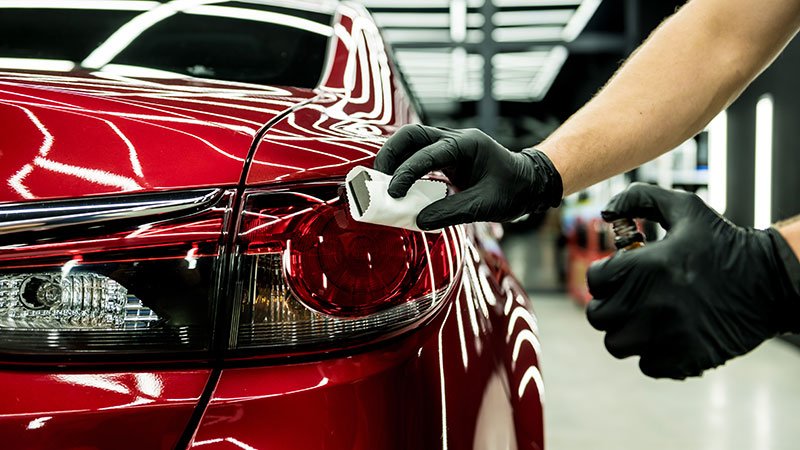Choose premium paint protection film for a flawless layer of protection.
Choose premium paint protection film for a flawless layer of protection.
Blog Article
A Comprehensive Guide to the Kinds of Ceramic Layer on the marketplace
Ceramic finishings have emerged as a pivotal service across various industries due to their one-of-a-kind properties and applications. As we check out the distinct features and applications of these coatings, the ramifications for performance and longevity become increasingly apparent, elevating concerns concerning which type may ideal suit your demands.
Understanding Ceramic Coatings
Ceramic coverings are sophisticated safety services that have actually gained popularity in numerous sectors, specifically in automobile and aerospace applications. These finishes include a fluid polymer that, when cured, develops a sturdy, hydrophobic layer externally of the substrate. This layer offers enhanced resistance to environmental impurities, UV radiation, and chemical direct exposure, thus extending the life and aesthetic appeal of the underlying product.
The fundamental part of ceramic finishes is silica, which contributes to their solidity and resilience. The application process normally entails surface area preparation, application of the finish, and treating, which can be attained through warm or UV light. As soon as treated, ceramic finishings display remarkable bonding buildings, allowing them to adhere highly to a variety of surface areas, consisting of steels, plastics, and glass.
In addition to their protective functions, ceramic coatings additionally provide ease of upkeep. Their hydrophobic nature minimizes the adherence of dirt and grime, making cleansing easier and much less frequent. On the whole, the fostering of ceramic finishes represents a substantial innovation in surface defense modern technology, offering both practical and aesthetic advantages across several markets.
Sorts Of Ceramic Coatings
Different kinds of ceramic finishings are available, each made to fulfill details performance needs and applications - Auto Detailing. The most common types consist of:
Silica-based Coatings: These coverings largely contain silicon dioxide and are recognized for their sturdiness and chemical resistance. They are extensively used in automotive and commercial applications.
Titanium Dioxide Coatings: Popular for their photocatalytic residential or commercial properties, titanium dioxide coatings are commonly applied in settings where self-cleaning and antifungal homes are desirable, such as in building products and automobile finishes.
Zirconia Coatings: Characterized by their high-temperature security and thermal resistance, zirconia finishes are utilized in applications such as turbine engines and high-performance automotive elements.
Alumina Coatings: Displaying excellent firmness and thermal stability, alumina coverings are often used in wear-resistant applications, including cutting tools and commercial equipment. - Car Detailing
Crossbreed Coatings: Integrating the homes of different materials, crossbreed coverings offer boosted efficiency features, making them ideal for one-of-a-kind and demanding applications.
Each sort of ceramic finishing offers distinctive purposes, permitting users to select the most proper service based upon particular ecological problems and performance requirements.
Benefits of Ceramic Coatings
Ceramic coatings, in certain, offer numerous benefits that make them increasingly prominent among suppliers and consumers alike. These coatings are resistant to scrapes, chemicals, and UV rays, ensuring that the underlying surface remains safeguarded over time.
Along with resilience, ceramic coatings provide superb hydrophobic properties, enabling for very easy cleaning and maintenance. This water-repellent nature decreases the adherence of dirt, crud, and various other pollutants, which can lengthen the aesthetic allure and functionality of the surface area. In addition, ceramic coatings can dramatically enhance thermal resistance, making them ideal for applications that endure heats.

Application Refine
When applying ceramic coverings, a precise technique is necessary to attain ideal results. The application process typically begins with extensive surface preparation. This includes washing, sanitizing, and brightening the surface area to remove all contaminations, including dust, grease, and prior waxes or sealers. A clean surface area makes certain correct attachment of the covering.
As soon as the surface is prepped, the next step is to apply the ceramic finish. This can be done utilizing an applicator pad or a microfiber towel, making sure also insurance coverage. It is important to operate in little sections to keep control and avoid premature healing. The layer ought to be used in thin layers, as thicker applications can result in uneven surfaces.
After application, the layer calls for a details curing time, usually varying from a couple of hours to a complete day, depending on the item. Following these steps vigilantly will make the why not try this out most of the efficiency and durability of the ceramic layer, providing a resilient safety layer for the surface area.
Upkeep and Long Life
To make sure the durability and efficiency of a ceramic finishing, normal maintenance is necessary. Ceramic coverings, understood for their resilience and protective top qualities, require particular treatment routines to maximize their life-span and performance.
Along with regular cleaning, regular evaluations are vital. Try to find indicators of wear or damage, such as hydrophobic residential properties diminishing or surface blemishes. If necessary, a light polish may be used to rejuvenate the coating without stripping it away.
Moreover, the application of a booster spray can improve the covering's hydrophobic effects and recover its gloss. This is particularly advantageous for finishings that have actually remained in use for an extensive period. Ultimately, by adhering to these upkeep practices, one can substantially extend the life of a ceramic finishing, making certain that it remains to supply optimal defense versus environmental aspects and preserve the aesthetic allure of the car.
Conclusion

Report this page